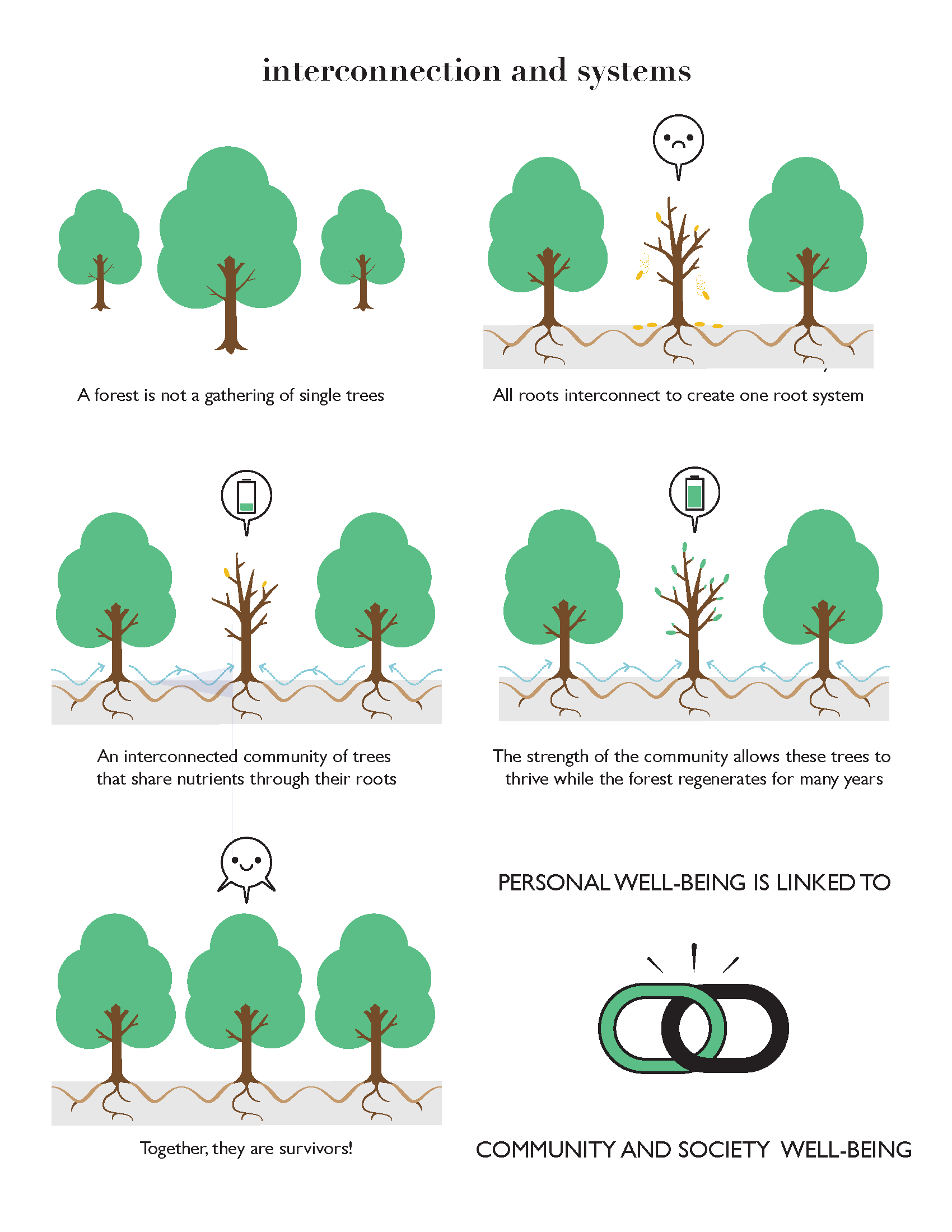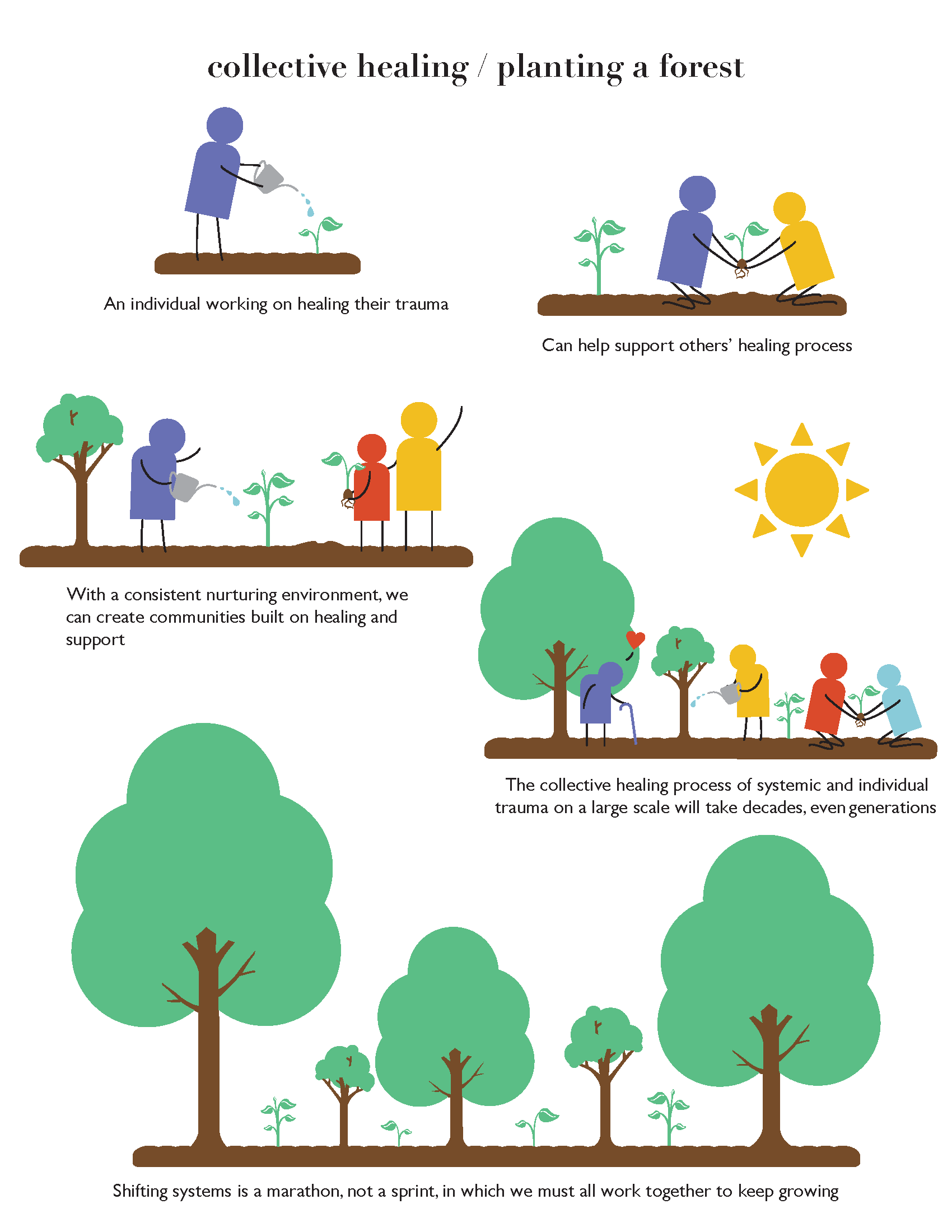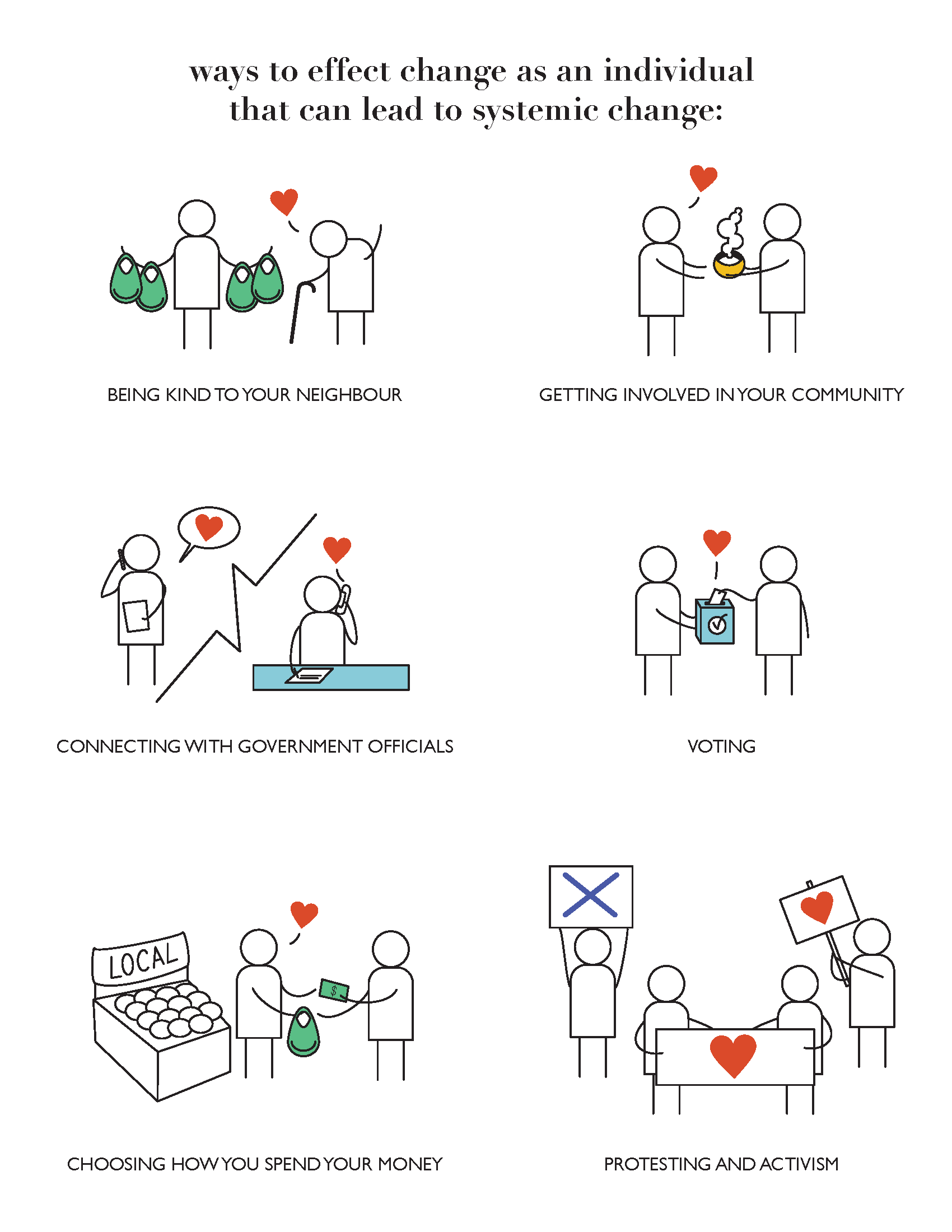Hope for our World
Interconnection and Systems
Consider the aspen tree, native to Canada. In a forest of aspens, we see a gathering of single trees. However, aspens are not solitary trees. Beneath the surface of the soil they are an interconnected community of trees that share nutrients through their roots. All the roots interconnect and create one singular root system. Together, they are survivors. The strength of the community allows these trees to thrive, while the forest regenerates for many years.
We often forget that – like the aspen tree – as human beings we are also inextricably interconnected.

When we look at the world through a lens of interconnection, we see how we all impact each other in profound ways. Our well-being is so connected to our communities and the societies we are a part of. The results of our actions don’t just affect us–the effects of our choices and actions ripple out and impact others (directly or indirectly).
We see this impact in systemic trauma. When someone is mistreated by one system, it trickles down and impacts many, including the people working within the system, family members of the person impacted, and the people with whom they all connect.
The encouraging part of this is that interconnection means we can also impact systems in a positive way! Consider all the people you interact with in your life. When you impact someone in a positive way, that kindness radiates out and spreads to others. And when you challenge an injustice, the same thing happens.

This is how we begin to repair these flawed, harmful systems. When we each do our part, however small it might seem to us, it has a powerful cumulative effect on others. We can’t forget that shifting systems is a marathon, not a sprint. We can make an impact, but in order to keep going, we need to maintain collective inspiration, hope, connection, and endurance.
Hope Through Trauma-Informed Care
There is hope for those of us who have experienced trauma, and there is hope for the systems that traumatize and retraumatize people. That hope expands into new possibilities when we focus on building strengths and resiliency in ourselves, the people we support, and all stakeholders.
We can be encouraged by people who are championing this cause. A little town in Florida called Tarpon Springs has declared themselves the first trauma-informed city in North America. In 2010 the community learned about what it meant to be trauma-informed, and many community leaders came together to collaborate on a new approach to service that included a trauma-informed lens.
As a community instead of asking “what’s wrong with them?” when someone perpetrates a crime, they are asking, “what happened to them?”
This is the Mission of an initiative of community leaders that have gathered to support community members:
Tarpon Springs Trauma Informed Community Initiative’s mission is to provide everyone in our community with information on the causes and consequences of trauma, public and provider education, resource assistance and advocacy for appropriate prevention and intervention services. To effect long-term community improvement, we work to increase awareness of issues facing members of our community who have been traumatized to promote healing.
This is so hopeful! Over time perhaps many cities will take this stance, and in the meantime, we can take a trauma-informed approach in our work in peer support.

You Can’t Fix Everything, and That’s ok
It’s important to note that there might be times in our own journey when we are in the thick of our own struggle, and we may not be able to practice activism. That is ok! We may need others to come alongside to support and advocate for us. This is one of the beautiful aspects of peer support–the MUTUALITY of support!!
Preventing and healing trauma is a systemic issue, and it needs collaboration and a systems approach to fix it. Know that you can’t do it alone.
Image Descriptions
A series of illustrations of trees with text explaining interconnection and systems.
- A forest is not a gathering of single trees
- All roots interconnect to create one root system
- An interconnected community of trees that share nutrients through their roots
- The strength of the community allows these trees to thrive while the forest regenerates for many years
- Together they are survivors!
Personal well-being is linked to community and society well-being.
Collective healing/planting a forest
A series of illustration of planting a forest explaining collective healing
- An individual working on healing their trauma
- Can help support others’ healing process
- With a consistent nurturing environment, we can create communities built on healing and support
- The collective healing process of systemic and individual trauma on a large scale will take decades, even generations
- Shifting systems is a marathon, not a sprint, in which we must all work together to keep growing
Ways to effect change as an individual that can lead to systemic change:
- being kind to your neighbour
- getting involved in your community
- connecting with government officials
- voting
- choosing how you spend you money
- protesting and activism
Media Attributions
- Interconnection and systems by Jeseye Tanner is licensed under a CC BY 4.0 licence.
- Collective healing/planting a forest by Jeseye Tanner is licensed under a CC BY 4.0 licence.
- Systemic change by Jeseye Tanner is licensed under a CC BY 4.0 licence.

